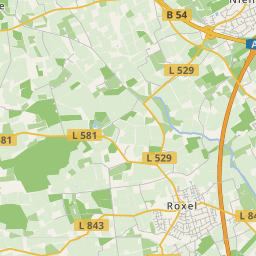











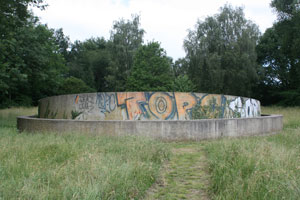
On the southwestern Lake Aa meadow below the mill, are the concrete rings by Donald Judd to be seen in reference to the Lake Aa landscape from the sculpture exhibition in 1977. The outer concrete ring with a diameter of 15 metres follows the inclination of the steep bank slope. The inner ring with a diameter of around 13 metres can be seen as opposite to the lake water level.
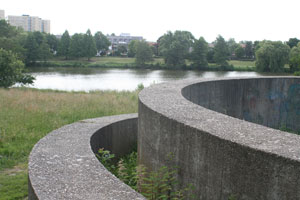
Judd studied at the College of William and Mary in Williamsburg, from 1948 to 1949, in Virginia at the Art Students League art history from 1949 to 1953, as well as philosophy at the Columbia University in New York and continued, after a break his art and philosophy studies at the 'Columbia University' from 1957 to 1962. In 1962 he was awarded with lectureships at the 'Brooklyn Institute of Arts and Sciences', New York, at the Yale University, New Haven, at the University of Saskatchewan and at the Oberlin College in Ohio. From 1959 to 1965, he worked as an independent critic for the art magazines 'Art News', 'Arts Magazine' and 'Art International'. When he became known as an artist, he had made a name for himself already through intensively working with European and young American art.
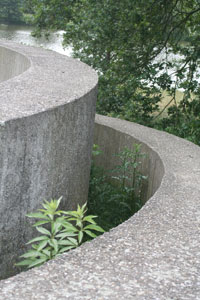
Judd started his career as a painter, but didn't want his pictures to hang on a wall. In addition, he experimented with freestanding objects, but he was more interested with its outer forms as was then usual. He was looking for something that was neither painting nor sculpture, but would unite both. With the 'specific objects', he succeeded through cuts and stripes to bring space into the picture. He also integrated objects in two-dimensional works to create depths not only through illusion. 'Actual space is really much more expressive and specific than paint on a flat surface'.
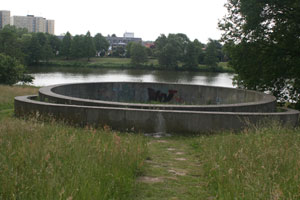
He used 'reduced, geometrical basic forms' from 'industrial material', as in the bareness lives a special aesthetics. For Donald Judd, artwork is to be understood as whole and not as an addition of individual visual foci. Transparency, objectivity, order and chaos, as well as renouncing composition were important. Material, space, colour, volume and light are aspects of everyday life. All this should be made visible in an artwork according to Judd.